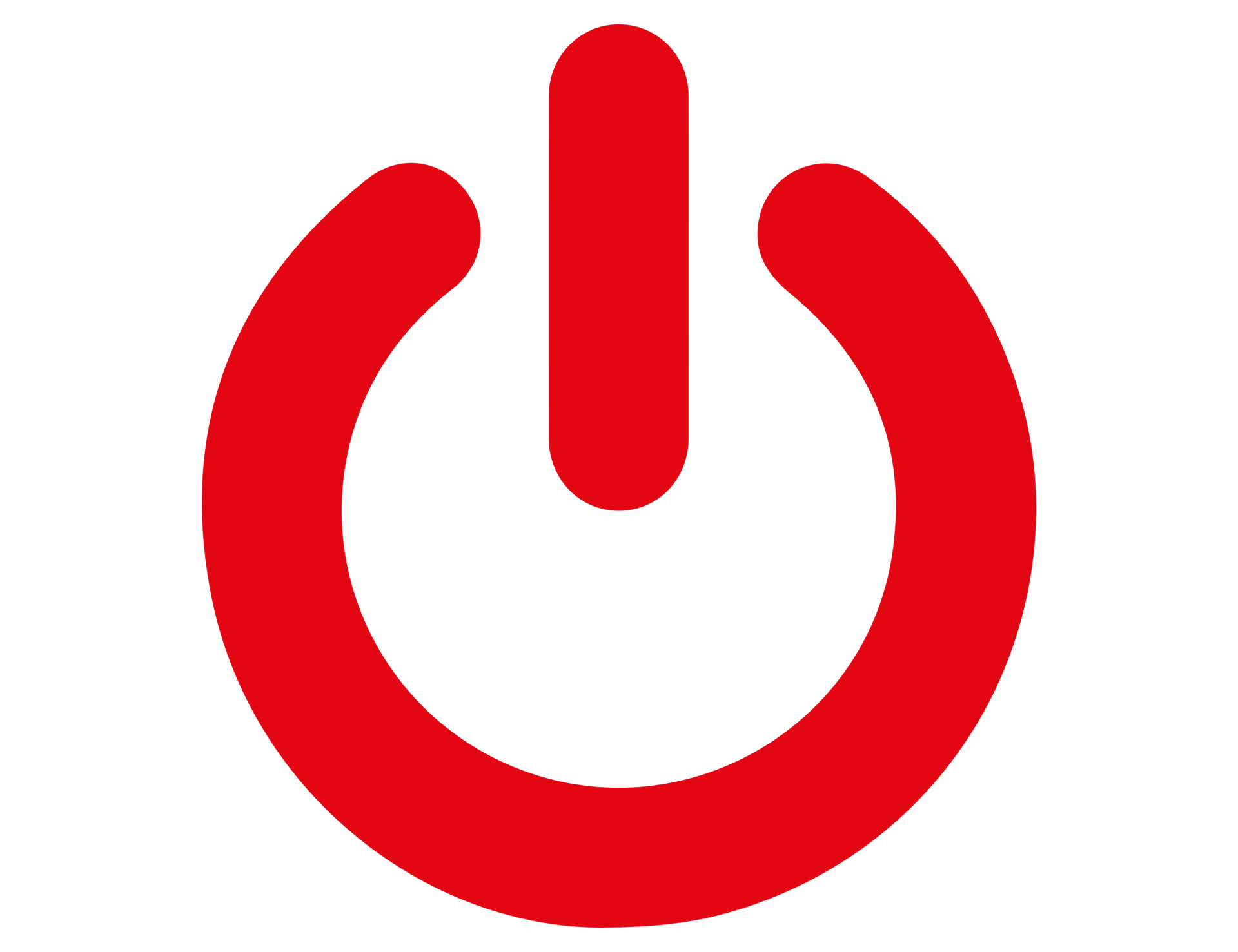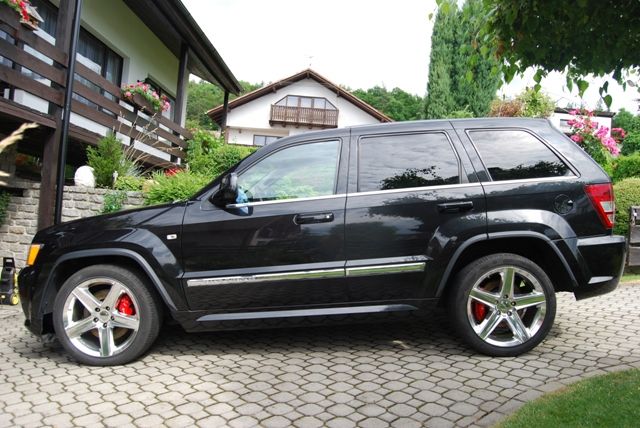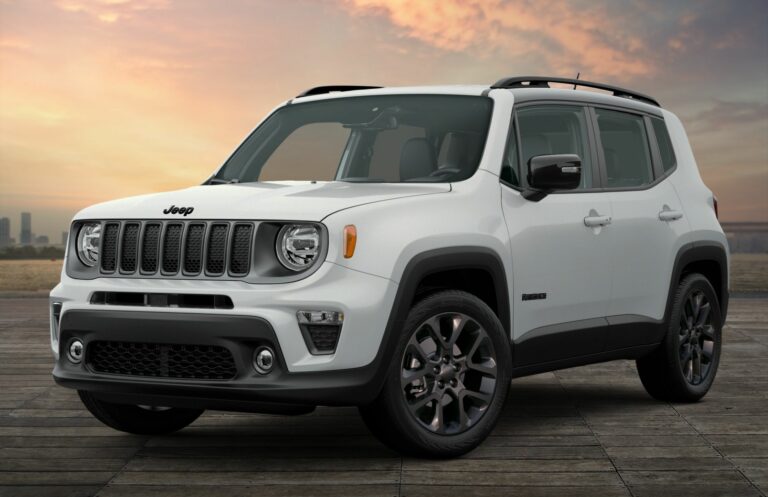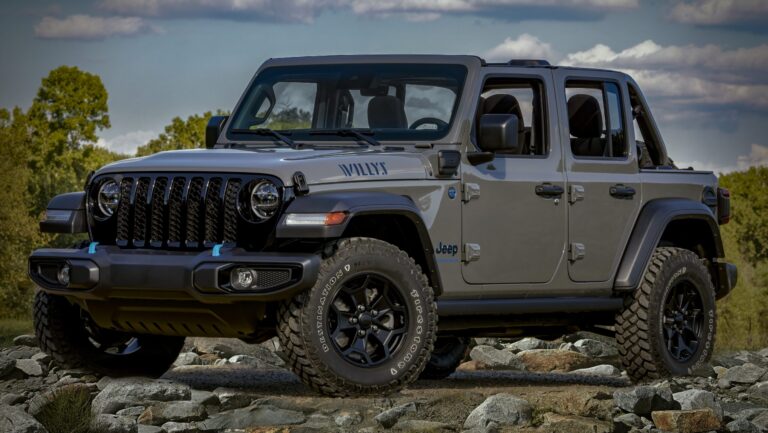Off Road Accessories For Jeep Wrangler: Your Ultimate Guide to Trail Domination
Off Road Accessories For Jeep Wrangler: Your Ultimate Guide to Trail Domination jeeps.truckstrend.com
The Jeep Wrangler isn’t just a vehicle; it’s a lifestyle, an icon of adventure, and a blank canvas for customization. While Wranglers roll off the factory floor with impressive off-road prowess, the true potential for conquering challenging terrain is unleashed through a carefully selected array of off-road accessories. These aren’t just cosmetic enhancements; they are functional upgrades designed to improve performance, enhance safety, increase capability, and provide peace of mind when the pavement ends. For every aspiring overlander, hardcore rock crawler, or weekend trail enthusiast, understanding and choosing the right accessories is the key to transforming a capable vehicle into an unstoppable force. This comprehensive guide will navigate the vast world of Jeep Wrangler off-road accessories, helping you build the ultimate trail machine.
The Foundation: Suspension Systems & Lift Kits
Off Road Accessories For Jeep Wrangler: Your Ultimate Guide to Trail Domination
One of the most impactful modifications for any off-road Jeep Wrangler is upgrading its suspension system and installing a lift kit. The primary goal is to increase ground clearance, allowing your Jeep to clear obstacles like rocks and logs without damaging critical undercarriage components. Beyond clearance, a quality lift kit also enhances articulation – the ability of the wheels to maintain contact with uneven terrain, improving traction and stability.
- Types of Lifts:
- Coil Spacers/Budget Boosts: These are the simplest and most affordable, using spacers above or below the factory coil springs to gain 1-2 inches of lift. Ideal for fitting slightly larger tires and mild off-roading.
- Performance Coil Lifts: Replace factory coil springs with longer, often stiffer, aftermarket springs. These provide 2-3 inches of lift and improve ride quality and articulation, especially when paired with new shocks.
- Full Suspension Systems: The most comprehensive upgrade, replacing springs, shocks, control arms, track bars, and sometimes even steering components. These kits are designed for 3+ inches of lift, allowing for significantly larger tires and maximizing off-road performance and on-road comfort.
- Benefits: Increased ground clearance, improved approach/departure/breakover angles, enhanced articulation, ability to fit larger tires, and often a more comfortable ride than stock (with quality kits).
- Considerations: Higher lifts can affect driveline angles, requiring modifications like new driveshafts or transfer case drops. Steering geometry may also need correction. Always match the lift height to your intended tire size and off-road activity.
![]()
Gripping the Earth: Tires & Wheels
After a lift, the next most crucial upgrade is a set of purpose-built off-road tires and wheels. Tires are your only contact point with the terrain, making them paramount for traction, durability, and performance.
- Tire Types:
- All-Terrain (AT) Tires: A versatile choice, offering a good balance of off-road traction and on-road manners. They are quieter and last longer than mud-terrains, suitable for daily driving with occasional trail use.
- Mud-Terrain (MT) Tires: Designed with aggressive tread patterns and large voids to grip in mud, rocks, and loose dirt. They excel off-road but can be noisy and wear faster on pavement.
- Hybrid Tires: A newer category blending AT and MT characteristics, offering a more aggressive AT pattern or a less aggressive MT pattern.
- Tire Size: Larger tires increase ground clearance and improve obstacle traversal. However, they also add weight, increase rolling resistance, and can negatively impact acceleration and braking if not compensated for with re-gearing.
- Wheels:
- Material: Steel wheels are durable and inexpensive but heavy. Aluminum alloy wheels are lighter, stronger, and dissipate heat better.
- Offset & Backspacing: Critical for fitting larger tires without rubbing. Proper backspacing pushes the wheel out, creating clearance between the tire and suspension components.
- Beadlock Wheels: Designed for extreme off-roading, they physically clamp the tire bead to the wheel, allowing you to run extremely low tire pressures for maximum traction without the tire coming off the rim. Not street legal in many areas.
- Practical Advice: A common upgrade path involves moving from stock 30-32 inch tires to 33-37 inch tires, often requiring a 2-4 inch lift. Always consider a full-size spare tire.
Protecting Your Investment: Armor & Protection
Off-roading inevitably involves impacts with rocks, trees, and other obstacles. Robust armor is essential to protect the vulnerable underbelly and body of your Jeep Wrangler.
- Rock Sliders: These stout rails mount to the frame or body, protecting the rocker panels (the area below the doors) from damage when sliding over rocks or stumps. They also serve as a convenient step.
- Skid Plates: A series of plates designed to shield critical components like the engine, transmission, transfer case, fuel tank, and oil pan from direct impacts. Typically made from steel or aluminum, they create a smooth surface that allows the Jeep to slide over obstacles.
- Aftermarket Bumpers (Front & Rear):
- Front Bumpers: Offer enhanced approach angles, integrate winch mounts, and often feature D-ring recovery points. Options range from stubby (narrow) for maximum tire clearance to full-width for more protection.
- Rear Bumpers: Provide improved departure angles, integrate recovery points, and often include provisions for a swing-out tire carrier to accommodate larger spare tires.
- Differential Covers: Heavy-duty covers protect the differential housing and gears from impacts, often increasing fluid capacity for better cooling.
- Fender Flares: Aftermarket fender flares can provide more tire clearance for larger tires and protect the body from mud and debris kicked up by aggressive tires. Some are designed for increased articulation.
- Benefits: Prevents costly damage, provides peace of mind on challenging trails, and often includes integrated recovery points.
- Considerations: Armor adds significant weight, which can affect fuel economy and suspension performance if not properly compensated for.
Getting Unstuck: Winching & Recovery Gear
Even the most capable Jeep can get stuck. Having the right winching and recovery gear is paramount for self-sufficiency and assisting others on the trail.
- Winch: An indispensable recovery tool, mounted on the front bumper.
- Capacity: Choose a winch with a pulling capacity of at least 1.5 times your Jeep’s Gross Vehicle Weight Rating (GVWR).
- Rope Type: Steel cable is traditional but heavy and can splinter. Synthetic rope is lighter, stronger, and safer, but requires more care.
- Recovery Straps:
- Kinetic Energy Recovery Ropes (Snatch Straps): Stretchy ropes used for dynamic recoveries, absorbing kinetic energy to gently "snatch" a stuck vehicle free.
- Tow Straps: Non-stretchy straps used for static pulls or towing.
- Shackles (D-rings/Bow Shackles): Connect recovery straps to recovery points on your bumper or frame. Always use rated shackles.
- Tree Saver Strap: A wide strap used to protect trees when using them as anchor points for winching.
- Snatch Block: A pulley system that doubles your winch’s pulling power or changes the direction of pull.
- Hi-Lift Jack: A versatile, heavy-duty jack for lifting, winching, or spreading. Requires practice and caution.
- Practical Advice: Always carry a basic recovery kit, even if you don’t have a winch. Proper training on recovery techniques is crucial for safety.
Illuminating the Path: Lighting Solutions
When the sun sets or you’re navigating dense trails, enhanced lighting is critical for safety and visibility.
- LED Light Bars: Available in various lengths and beam patterns (spot, flood, combo), these provide immense forward illumination.
- Pod Lights (Ditch Lights, A-Pillar Lights): Smaller, focused lights often mounted on the A-pillars or bumpers, useful for illuminating the sides of the trail or specific obstacles.
- Rock Lights: Small, durable LED lights mounted underneath the Jeep, illuminating the terrain directly beneath the vehicle, invaluable for nighttime rock crawling.
- Auxiliary Headlights/Fog Lights: Upgraded units offer superior light output compared to factory halogens, improving visibility in all conditions.
- Benefits: Improved nighttime visibility, enhanced safety, and ability to continue off-roading after dark.
- Considerations: Check local laws regarding auxiliary light use on public roads. Proper wiring and relays are essential to prevent electrical issues.
Power & Traction: Performance Upgrades
While accessories protect and lift, performance upgrades focus on optimizing the drivetrain for off-road demands.
- Re-Gearing: One of the most important upgrades after installing larger tires. Larger tires effectively raise your final drive ratio, making the engine work harder. Re-gearing (installing new ring and pinion gears in the axles) restores the optimal gear ratio, improving acceleration, power, and fuel economy, especially at highway speeds.
- Lockers (Differential Lockers): When a wheel loses traction, an open differential sends power to the path of least resistance (the spinning wheel). Lockers mechanically "lock" the two wheels on an axle together, forcing them to spin at the same rate, ensuring power is always sent to the wheel with traction.
- Selectable Lockers: Engaged by the driver via a switch (air-actuated like ARB, or electric like Eaton E-Locker). They offer full locking capability when needed and open differential operation for better on-road manners.
- Automatic Lockers: Engage automatically when torque is applied. Simpler and less expensive but can be less predictable on pavement.
- Cold Air Intakes & Exhaust Systems: While offering modest power gains, these can improve engine breathing and create a more aggressive exhaust note.
- Tuners/Programmers: Recalibrate the engine’s computer for optimal performance with larger tires, different gear ratios, or other modifications. Can also adjust throttle response and shift points.
- Benefits: Enhanced traction, restored power, improved control over challenging terrain.
- Considerations: Re-gearing and locker installation are complex jobs best left to experienced professionals.
Comfort & Convenience: Interior & Storage Solutions
Off-roading isn’t just about conquering obstacles; it’s also about the journey and being prepared. Interior and storage accessories enhance comfort, organization, and safety.
- Cargo Management:
- Drawer Systems: Securely store gear, tools, and recovery equipment in the rear cargo area.
- MOLLE Panels: Mount to roll bars or seat backs, providing modular storage for smaller items like first aid kits, pouches, and tools.
- Cargo Nets & Barriers: Keep gear secure and prevent it from shifting during aggressive driving.
- Communication:
- CB Radios: Essential for trail communication with other vehicles, especially in areas without cell service.
- GMRS Radios: Offer more channels and range than CBs, popular for group communication.
- Navigation: Dedicated GPS units (Garmin Tread, Gaia GPS on a tablet) are often more reliable than phone-based apps in remote areas.
- Safety Gear: Fire extinguisher, first aid kit, seat belt cutters, window breakers – always accessible.
- Comfort & Convenience: Grab handles, rugged floor mats, seat covers, interior lighting upgrades.
- Benefits: Improved organization, enhanced safety, better communication, and a more enjoyable off-road experience.
Practical Advice and Actionable Insights
- Prioritize Your Purchases: Start with the basics:
- Tires: Crucial for traction.
- Lift Kit: To accommodate tires and gain clearance.
- Recovery Gear: Essential for safety and self-sufficiency.
- Armor: To protect your investment.
- Performance & Lighting: As your skills and needs evolve.
- Set a Budget: Off-road accessories can be expensive. Plan your upgrades in stages.
- Do Your Research: Not all brands or products are created equal. Read reviews, watch videos, and consult with experienced off-roaders. Ensure compatibility with your specific Wrangler model and year.
- Professional Installation vs. DIY: While some accessories are bolt-on friendly (bumpers, rock sliders), complex installations like lift kits, re-gearing, and lockers often require specialized tools and expertise. Don’t hesitate to consult a reputable off-road shop.
- Understand Legalities: Be aware of local laws regarding vehicle modifications, especially lift height, tire protrusion, and auxiliary lighting.
- Learn to Drive: Accessories enhance capability, but they don’t replace skill. Take an off-road driving course to maximize your Jeep’s potential and ensure safe operation.
Estimated Price Guide for Off-Road Accessories for Jeep Wrangler
Please note that prices are highly variable based on brand, quality, specific model, and whether installation is DIY or professional. These are estimated ranges to give you a general idea.
| Accessory Category | Typical Estimated Price Range (USD) | Notes |
|---|---|---|
| Suspension & Lift Kits | ||
| Coil Spacers / Budget Boost | $150 – $400 | 1-2 inch lift, basic. |
| Performance Coil Lift | $500 – $1,500 | 2-3 inch lift, improved ride/articulation. |
| Full Suspension System | $1,500 – $5,000+ | 3+ inch lift, complete overhaul, high-performance. |
| Tires & Wheels | ||
| Off-Road Tires (Set of 5) | $1,200 – $3,500+ | Varies significantly by size, type (AT/MT), and brand. |
| Aftermarket Wheels (Set of 5) | $600 – $2,500+ | Steel vs. Aluminum, design, brand. Beadlocks typically higher. |
| Armor & Protection | ||
| Front Bumper (Winch-ready) | $400 – $1,800+ | Stubby to full-width, material, features. |
| Rear Bumper (Tire Carrier) | $500 – $1,500+ | Material, integrated features. |
| Rock Sliders | $300 – $1,200+ | Bolt-on vs. Frame-mounted, material. |
| Skid Plates (Full Set) | $600 – $2,000+ | Engine, transmission, transfer case, fuel tank, differential. |
| Heavy-Duty Diff Covers | $100 – $300 (per axle) | |
| Winching & Recovery Gear | ||
| Electric Winch | $400 – $2,500+ | Capacity, motor type, synthetic vs. steel cable. |
| Basic Recovery Kit | $150 – $400 | Includes strap, shackles, gloves, bag. |
| Hi-Lift Jack | $100 – $250 | |
| Lighting Solutions | ||
| LED Light Bar (20-50 inch) | $100 – $800+ | Brand, lumens, beam pattern. |
| LED Pod/Ditch Lights | $50 – $300 (per pair) | |
| Rock Lights (Set of 4-8) | $80 – $300 | |
| Performance Upgrades | ||
| Re-Gearing (per axle) | $800 – $1,800+ (parts & labor) | Cost per axle, includes new gears and installation. |
| Lockers (per axle) | $600 – $1,800+ (parts & labor) | Selectable (more expensive) vs. Automatic, plus compressor/wiring. |
| Cold Air Intake | $200 – $500 | |
| Cat-Back Exhaust | $300 – $800 | |
| Interior & Storage | ||
| Cargo Drawer System | $500 – $2,000+ | Custom fit, material, features. |
| MOLLE Panels | $50 – $200 (per panel) | |
| CB Radio System | $150 – $400 | Radio, antenna, mount. |
| GMRS Radio System | $200 – $500 | Radio, antenna, mount. |
Note: Prices do not typically include installation labor, which can add significant cost.
Frequently Asked Questions (FAQ)
Q1: Do I really need all these accessories for my Jeep Wrangler?
A1: Not necessarily all of them, especially if you’re only doing light trails. The "must-have" accessories depend on the type of off-roading you plan to do. For most, a good set of tires, a moderate lift, and basic recovery gear are a great starting point.
Q2: What’s the first accessory I should get for off-roading?
A2: A common and highly recommended first upgrade is a good set of all-terrain or mud-terrain tires. They provide a significant improvement in traction over stock tires and are fundamental to off-road capability. A basic recovery kit (straps, shackles) is also a crucial early purchase for safety.
Q3: Will installing a lift kit void my Jeep’s warranty?
A3: Generally, no, not entirely. Under the Magnuson-Moss Warranty Act, a dealer cannot void your entire vehicle warranty just because you installed an aftermarket part. However, if the aftermarket part directly causes a failure of a factory component (e.g., a poorly installed lift causes a driveshaft failure), then the warranty for that specific component might be denied. It’s best to use reputable parts and have professional installation for complex modifications.
Q4: How important is re-gearing after installing larger tires?
A4: Extremely important. Without re-gearing, larger tires will make your Jeep feel sluggish, strain the engine and transmission, decrease fuel economy, and impact braking performance. Re-gearing restores the optimal power band, making your Jeep feel much more responsive and efficient with the new tire size.
Q5: Can I install off-road accessories myself, or should I go to a professional shop?
A5: Many accessories like bumpers, rock sliders, and light bars can be installed by a competent DIYer with basic tools and some mechanical aptitude. However, complex installations such as lift kits, re-gearing, and locker installation require specialized tools, precise measurements, and expertise. For these, professional installation is highly recommended to ensure safety and proper functionality.
Q6: What’s the main difference between All-Terrain (AT) and Mud-Terrain (MT) tires?
A6: AT tires offer a balance of off-road traction and on-road comfort, with a tighter tread pattern that’s quieter and longer-lasting on pavement. MT tires have a much more aggressive, open tread pattern designed for maximum traction in mud, rocks, and loose dirt. They are generally noisier on the road, wear faster, and offer less grip on wet pavement. Choose based on your primary driving environment.
Conclusion
Embarking on the journey of accessorizing your Jeep Wrangler for off-road adventures is an exciting and rewarding endeavor. Each upgrade, from a towering lift kit and aggressive tires to robust armor and essential recovery gear, plays a vital role in transforming your Jeep into a formidable off-road machine. By understanding the purpose and benefits of each accessory, prioritizing your needs, and investing wisely, you’ll unlock unparalleled capability and confidence on the trails. Remember, building a capable off-road Jeep is a continuous process of learning, upgrading, and exploring. The open road, or rather, the open trail, awaits your custom-built Wrangler, ready for new adventures.




